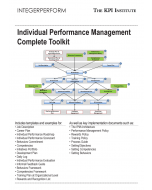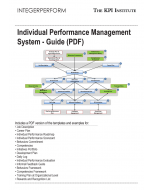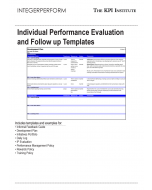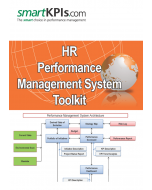Quick Guides for Developing an IPM system

The Guides for Developing an IPM system are designed to provide answers to some of the key questions an HR professional might have when designing and implementing an individual performance management system. The guides focus on explaining the steps to be followed in such an execution, along with useful tips and best practices.
Guides List
Behaviors Framework Example - a pre-populated template highlighting a way to organize the key behaviors that your organization chooses to use and communicate as expectations for all its employees.

Competencies Framework - a pre-populated template indicating how to group the key competencies your organizations chooses to use and communicate as expectations for its employees.

Individual Performance Process Guide - highlights and explains the different stages of the individual performance management process, the key players and their roles and responsibilities in the process, as well as the documents that are involved in the process and tips for success.
It can be used by human resources professionals as a quick guide or can be edited and sent to managers and employees as a communication material and reference supporting the individual performance management process.

Objective setting - provides two alternatives for setting up objectives, explains how to cascading objectives from one level in the organization to another, highlighting the steps in cascading objectives. It also mentions examples of scales used in measuring progress in achieving objectives and lists pros and cons for measuring overall performance solely based on results in achieving objectives.
Setting competencies - mentions benefits of using competencies and competencies model, defining key concepts, types of competencies. It then details how to use competencies in practice, mentions sources and methods for identifying the specific competencies relevant to roles in your organization. An example of how to integrate a competency in the development plan is also included, together with a list of competencies.

Behaviors - presents the importance of using behaviors as part of the individual performance management process, defines key terms and then emphasizes the steps in identifying and also in employing behaviors as elements of the individual performance plan. It also presents examples of scales used in assessing behaviors.

Customization
- Each template included in the toolkit is also accompanied by an example of how it can be used in practice, so that you can easily develop your customized documents based on our examples.
- Most of the templates are in Word or Excel format so that adding data and making calculations can be easily done without affecting the integrity of the template.
- Additional template customization support can be provided at cost by the smartKPIs.com team.
Benefits
- A set of tools for encouraging and supporting follow up in the individual performance management process.
- Pre-populated and customizable templates (editable).
| "smartKPIs.com provided a simple yet powerful scorecard and dashboard model to start building our own with our business intelligence tools." |
"I was pleasantly surprised of the level of experience and knowledge of the smartKPIs.com team. The toolkit delivered was what I had anticipated to be." |
| Humberto E Della Torre, El Salvador | Alex Giammona, Australia |
Online Purchasing Instructions


Choose a product and add it to the cart

Add more products or proceed to checkout
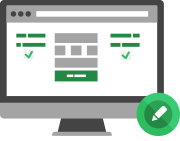
Fill in all the information and finalize the order

Check your email for confirmation and details

